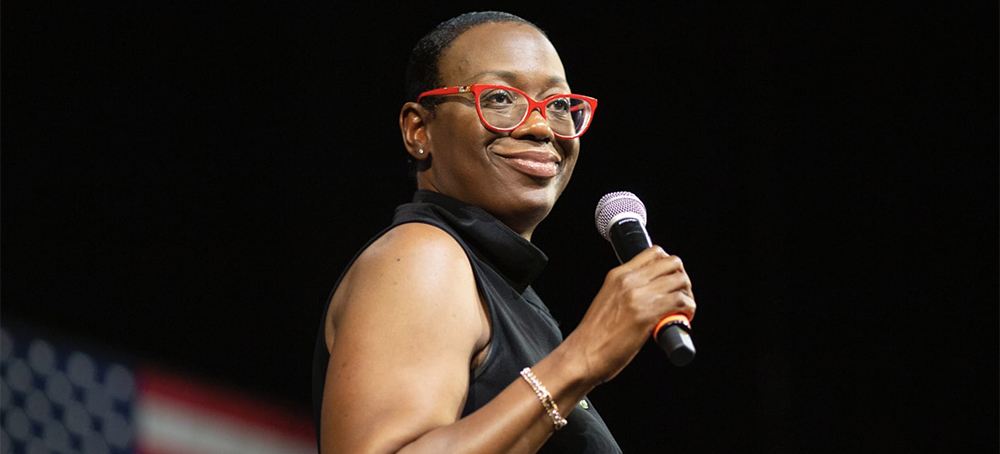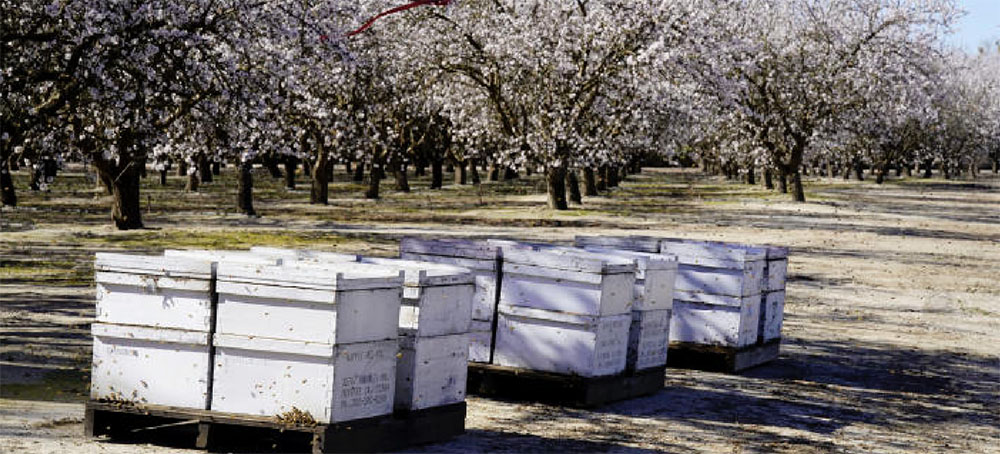Live on the homepage now!
Reader Supported News
If the Justices who have made the Supreme Court an agent of conservative counter-revolution overturn Roe v. Wade, there is no reason to believe that they will stop there.
President Biden, in a statement, called for elected officials and voters to defend abortion rights. “I believe that a woman’s right to choose is fundamental, Roe has been the law of the land for almost fifty years, and basic fairness and the stability of our law demand that it not be overturned,” he said. “If the Court does overturn Roe,” Biden added, “it will fall on our nation’s elected officials at all levels of government to protect a woman’s right to choose. And it will fall on voters to elect pro-choice officials this November. At the federal level, we will need more pro-choice Senators and a pro-choice majority in the House to adopt legislation that codifies Roe, which I will work to pass and sign into law.”
Prominent Democrats went further and demanded an immediate end to the Senate filibuster, which insures that most types of legislation require sixty votes to pass, and the passage of a federal law defending a woman’s ability to obtain an abortion. “Congress must pass legislation that codifies Roe v. Wade as the law of the land in this country NOW,” Senator Bernie Sanders tweeted on Monday night after Politico published Alito’s draft. “And if there aren’t 60 votes in the Senate to do it, and there are not, we must end the filibuster to pass it with 50 votes.” Senator Kirsten Gillibrand expressed the same sentiments, and so did a number of Democratic candidates who are engaged in high-profile election contests this year. “It’s time to end the filibuster, pass the Women’s Health Protection Act, and fight like hell to make sure all Ohio families are free to make these critical decisions without interference from politicians in Columbus or Washington,” said Congressman Tim Ryan, who is running for the U.S. Senate.
For now, these statements are more rhetoric than action: it’s difficult to see how Senate Democrats could get the sixty votes needed to end the filibuster, or even the fifty-one votes that could, in certain circumstances, be used to get around it by exercising the so-called nuclear option. Earlier this year, when the Party sought to alter the filibuster to pass a voting-rights bill, two Democratic members—Joe Manchin and Kyrsten Sinema—voted with the Republicans to defeat the maneuver. Since Manchin describes himself as “pro-life,” there is virtually no chance that he would reverse his position now, which means the Democrats would need to pick up some Republican support. That, too, seems highly unlikely, despite statements criticizing the Alito opinion from Senators Susan Collins and Lisa Murkowski. (“It rocks my confidence in the Court right now,” Murkowski said, of the leaked draft.) But, if the political challenges the Democrats face in eliminating the filibuster remain formidable, the prospect of the Supreme Court’s adopting Alito’s draft ruling has further strengthened the argument for pursuing such a course. When Manchin voted to preserve the sixty-vote rule, he claimed that it “plays an important role in protecting our democracy from the transitory passions of the majority and respecting the input of the minority in the Senate.” But, if Alito and four other conservative Justices vote to overturn nearly fifty years of legal precedent, maintaining the filibuster will serve only to entrench minority rule in the United States.
According to a new Washington Post/ABC News poll, Americans support retaining Roe v. Wade versus overturning it by a majority of roughly two to one. This survey isn’t an outlier: public opinion about abortion rights has remained favorable for decades. What has changed is that Donald Trump, a President who won in the Electoral College but lost the popular tally by almost three million votes, was enabled, through retirements and the happenstance of the mortality tables, to appoint three Justices who have fundamentally altered the balance of the Court and made it an agent of conservative counter-revolution. If they succeed in overturning Roe v. Wade, there is ample reason to believe that they will go on to reverse other liberal precedents, including federal affirmative-action rulings, same-sex marriage, and state gun-control laws. And, as long as the filibuster remains on the books, and the country remains deeply divided, the Senate will serve as a bulwark to reinforce the Court’s reactionary rulings.
The counter-argument is that eliminating the filibuster would lead to chaos and instability, as successive Congresses reversed the works of the previous ones. This is a canard. Other major democracies get along fine without this type of restriction, which, in the modern era, largely serves to prevent Presidents from enacting the platforms they are elected upon. When procedural rules are routinely used to block policies that the voters favor, it is not surprising that many people lose faith in the system.
Also, it is not as if the U.S. system doesn’t have other checks on the majority. The Electoral College and the Senate were both designed, at least in part, to avoid plebiscitary rule. In the current environment, the real danger is too little majority rule rather than too much of it. With a deadlocked Congress, an electoral system that favors states with small populations, a major political party that is still dominated by a politician who tried to stage a coup, and an unrepresentative high court that is now packed with judges determined to roll back landmark American jurisprudence, the danger of permanent minority rule is looming ever larger. Eliminating the filibuster isn’t a cure-all, but at a moment like this something should be done. It’s time for President Biden to say as much.
 Michigan Gov. Gretchen Whitmer. (photo: Nic Antaya/Detroit News/AP)
Michigan Gov. Gretchen Whitmer. (photo: Nic Antaya/Detroit News/AP)
Supreme Court conservatives have a plan to overturn Roe vs. Wade. Republicans have laws at the ready to ban abortion. Governors such as Gretchen Whitmer stand in their way
Abortions are relatively accessible in Michigan — for now, anyway. Lying dormant in the state’s legal code is a 1931 law that declares abortion a felony, with no exceptions for rape and incest. Roe vs. Wade superseded the law nearly 50 years ago. But if its landmark running is overturned, as the draft ruling suggests it will be, the only shields between abortion seekers and that law are Michigan’s attorney general, a Democrat who has vowed not to enforce the law; Whitmer, who filed a lawsuit last month to repeal the law; and the Michigan Supreme Court, which will decide the law’s fate.
And all of these defenses, of course, rely on these Democrats winning their elections in November. In a post-Roe moment, much of the on-the-ground access to abortion will depend on the outcome of state-level races. That’s especially true in battleground states, where executives like Whitmer offer the last line of defense.
“We will revert to one of the most extreme laws in the country if Roe falls,” Whitmer says of that scenario. “This law would change life for not just Michigan women and families, but others who have sought care here.” That includes many women from Indiana and Ohio, where abortion is tightly restricted and rely on nearby Michigan for services.
The war on abortion rights doesn’t stop with the Supreme Court overturning Roe, which would simply turn the question of abortion access over to the states. The ultimate goal of anti-abortion activists is to outlaw the practice in every state — or enact a blanket, nationwide ban, as the Washington Post reported this week. All but 12 states are under unified party rule, meaning most are poised to either embrace tight abortion restrictions or become pro-choice havens. Nearly two dozen states, all of them under Republican control, have passed or are in the process of passing anti-abortion laws in anticipation’s of Roe’s reversal.
If not for Whitmer, Michigan would surely join them: The state’s GOP-controlled legislature has repeatedly passed anti-abortion bills during Whitmer’s three years in office, but hasn’t sent them to her desk — “They know veto is the fate so long as I’m governor,” Whitmer says. Such a threat hasn’t discouraged Republican lawmakers in Pennsylvania, who have sent six abortion bans to Gov. Tom Wolf (D) to veto, nor those in Wisconsin, where Gov. Tony Evers has vetoed nine since 2019. (As in Michigan, Wisconsin’s Democratic attorney general has vowed not to enforce its 19th-century abortion ban if Roe is reversed.)
Kentucky Gov. Andy Beshear (D), meanwhile, didn’t have their luck with his state house’s GOP supermajority, which overrode his attempt to veto a 15-week abortion ban last month. North Carolina Gov. Roy Cooper (D) faced that same dynamic when he took office in 2017, but has vetoed two abortion restrictions in his second term. “It is absolutely true that Democratic governors are the last line of defense,” Cooper, who leads the Democratic Governors Association, says.
The draft opinion, if it stands, is out of step with voters, most of whom support the Roe decision and believe abortion access should remain legal in most instances, according to national polls. In Pennsylvania, Gov. Wolf observes that anti-abortion advocates have become a “weaker and weaker voice” in the GOP culture wars, especially as the party cranks up the volume on other battlefronts. It’s the outcome of “having relied too much on the court system,” Wolf says. (That’s especially true of this pending decision, which runs counter to the will of the federal Democratic trifecta and in which three of the five backing justices were appointed by a president who lost the popular vote.)
Even so, polls have also found that many voters don’t seem to understand the stakes of the expected Supreme Court ruling — or that overturning Roe is even on the table. “I don’t think that people are seriously thinking about the possibility that choice will go away,” Wolf says.
Wolf is term-limited, but his would-be Democratic successor, Pennsylvania attorney general Josh Shapiro, has already promised to “fight like hell to defend the right to choose.” News of the draft ruling, first reported by Politico late Monday night, unleashed a fury among the party faithful that recalled the night Justice Ruth Bader Ginsburg died in September 2020. For now, the hope of a galvanizing effect is just that: hope. The best data point, so far, is in Texas, where Republicans actually flipped formerly Democrat-held seats in the state legislature after it passed the restrictive abortion law.
Back in Michigan, Whitmer is, for now, in touch with her fellow Democrats and abortion providers to figure out what else the state might be able to do. She’s still waiting to hear from the state Supreme Court on her lawsuit. “Perhaps, in light of the revelations around the draft opinion,” she says, “that might make it more urgent they take action.”
 The special representative of the UN secretary-general on sexual violence in conflict, Pramila Patten (left) and Ukraine's deputy prime minister Olga Stefanishnina at the joint briefing in Kyiv. (photo: Ukrinform/REX/Shutterstock)
The special representative of the UN secretary-general on sexual violence in conflict, Pramila Patten (left) and Ukraine's deputy prime minister Olga Stefanishnina at the joint briefing in Kyiv. (photo: Ukrinform/REX/Shutterstock)
UN chief on sexual violence warns dozens of cases under investigation are ‘tip of the iceberg’
“I have received reports, not yet verified … about sexual violence cases against men and boys in Ukraine,” said Pramila Patten, UN special representative on sexual violence in war, at a press conference in Kyiv.
Patten added that it can be particularly challenging for male rape survivors to report the crime. “It’s hard for women and girls to report [rape] because of stigma amongst other reasons, but it’s often even harder for men and boys to report … we have to create that safe space for all victims to report cases of sexual violence.”
She warned that dozens of cases of sexual violence that are under investigation so far “only represent the tip of the iceberg”, as she urged survivors to come forward, and the international community to find perpetrators and hold them responsible. “Today’s documentation will be tomorrow’s prosecution,” she said.
Ukraine’s prosecutor general Iryna Venediktova said on Tuesday that her office had collected reports of sexual violence by Russian troops against men and women of all ages, from children to elderly people.
Speaking at a news conference in the shattered Kyiv suburb of Irpin, one of a cluster of small towns whose names have become synonymous with Russian war crimes, Venediktova said Moscow had used rape as a deliberate strategy. “This is, of course, to scare civil society … to do everything to [force Ukraine to] capitulate.”
There have been few public accounts of sexual violence in Ukraine. Some victims have left the country, and others who have stayed are frightened of speaking about their experience, Venediktova said.
However, teams of prosecutors and investigators have been gathering evidence of widespread sexual violence since Russian forces retreated just over a month ago.
Gang-rapes, assaults at gunpoint, and rapes committed in front of children are among the grim testimonies they have collected from victims and their families.
The country’s human rights commissioner Lyudmila Denisova, has officially documented the cases of 25 women who were kept in a basement and systematically raped in Bucha, which neighbours Irpin.
Forensic doctors carrying out postmortem examinations on women buried in mass graves say they have also found evidence some were raped before being killed by Russian forces.
UN envoy Patten said she was visiting Kyiv because of the overwhelming indications of widespread, systematic sexual violence in the conflict, and the risk to Ukrainian women from trafficking if they try to flee the conflict.
“All the warning signals are flashing red in Ukraine, with allegations of brutal sexual violence emerging,” she said, at a press conference with Ukraine’s deputy prime minister Olga Stefanishina.
“I could not stay back in my office in New York, in the face of such harrowing reports of sexual violence. I’m here because we must spare no effort to ensure zero tolerance and consistent consequences for these crimes,” Patten said.
While the fighting has ended around Kyiv for now, Russian soldiers still hold swathes of territory in the south and east of the country. Amid growing concern about rape there too, activists are trying to get emergency contraception into Ukrainian hospitals as quickly as possible.
Patten warned that for too long, the world had allowed sexual violence to be deployed as a cheap, silent and effective weapon against whole communities.
“Cheap, because it is cost free. Very effective, because it does not only affect the victim, it affects whole families, the communities,” she said. “It is biological warfare. It is psychological warfare.”
She said the UN would work with Ukrainian authorities to provide support for survivors, but is also investigating crimes to prepare cases for criminal trial.
Ukrainian investigators have already identified Russian soldiers they allege are responsible for war crimes including sexual violence, and an arrest warrant has been issued for one man accused of rape.
There has been international support for investigations, with French and Dutch forensic experts already on the ground. Britain has also promised to send investigators to help gather evidence of war crimes, including sexual violence.
But many question whether soldiers who have already retreated will face prosecution, as they are under the protection of the government in Moscow which ordered the invasion and denies committing war crimes.
 Nina Turner. (photo: David McNew/Getty Images)
Nina Turner. (photo: David McNew/Getty Images)
ALSO SEE: Rep Shontel Brown Beats Nina Turner in
Ohio Democratic Primary Rematch
Justice Democrats blamed pro-Israel super PACs run by DMFI and AIPAC for its decision to stay out of the rematch with Ohio Rep. Shontel Brown.
“Nina is a giant in the progressive movement and we’re proud to have gone all in for her campaign last year,” Justice Democrats said in a statement. “The reality is our organization has to be strategic about our priorities as we are getting massively outgunned by Republican donors funneling millions to SuperPACs like AIPAC [the American Israel Public Affairs Committee] and DMFI [Democratic Majority for Israel] against our existing candidates.”
Last August, Turner lost to Brown by six points in a special primary election. In the wake of that race, Turner told The Intercept that the result was heavily influenced by money from DMFI pouring in, especially after Israeli airstrikes in Gaza in May 2021. “I even have emails right now, to this day, of local, primarily business leaders in the Jewish community where they were encouraging Republicans to vote in this primary and were saying things like: We must support Shontel Brown, in no way can we let Nina Turner win this race,” she said.
In the 2021 cycle, DMFI PAC spent just under $2 million on ads supporting Brown and attacking Turner. The AIPAC-aligned Pro-Israel America PAC gave Brown’s campaign more than half a million dollars. Last year, Justice Democrats helped raise more than $100,000 for Turner and supported a half-million dollar independent expenditure backing her.
This year, Brown’s campaign was again propelled by outside pro-Israel groups that claimed Turner “stokes division” and painted her as an “anti-Israel” candidate. And Brown’s reelection campaign was again backed by AIPAC and DMFI, which is funded by $2 million from an oil and gas heir, along with a super PAC funded by a cryptocurrency billionaire. United Democracy Project, an AIPAC political action committee, spent more than $280,000 on the race last month, including more than $198,800 on ads attacking Turner. DMFI PAC spent more than $1 million on the race last month, including more than $312,000 on ads against Turner.
A spokesperson for Justice Democrats told The Intercept that the group didn’t have the resources to get involved in every primary — particularly in light of major spending from Republicans and pro-Israel groups. “Each candidate we recruit requires massive staff and financial resources, especially since many of our candidates have little-to-no name recognition or existing fundraising networks. If we had twice the budget we could likely get involved in twice the number of primaries. When we endorse a candidate, we’re typically going all-in for them with significant staff and financial investment, which isn’t possible for us to do in every primary right now.”
Many progressives who backed Turner last year stayed out of the race this cycle, which picked up after many groups had already drawn up their electoral strategies and top priorities for the 2022 midterms. Another major diversion came from the Congressional Progressive Caucus PAC, which endorsed Turner last year, spent $104,000 on an independent expenditure supporting her, and last month endorsed Brown. After her first election to Congress, Brown became a simultaneous member of the CPC and the centrist New Democrat Coalition, raising eyebrows.
Several prominent CPC members who backed Turner’s race last cycle — including Chair Pramila Jayapal, D-Wash.; Whip Ilhan Omar, D-Minn.; Deputy Whip Cori Bush, D-Mo.; and Reps. Ayanna Pressley, D-Mass.; Rashida Tlaib, D-Mich.; Jamaal Bowman, D-N.Y.; and Mondaire Jones, D-N.Y. — did not make endorsements in the race this year. The caucus, which has endorsed more than 20 incumbents so far, is reportedly reviewing its endorsement process after backlash over its endorsement of Brown. Reached for comment by The Intercept, CPC PAC spokesperson Evan Brown said the committee doesn’t share information on endorsement votes. The PAC has become more active in contested primaries since it launched its first independent expenditure in 2020, when it helped Jones win his primary election against a field of better-funded candidates.
The race has been characterized by relative inaction by national figures on the left — either in spite or because of the coalescing of power and resources behind Brown by the Democratic establishment. House Speaker Nancy Pelosi, D-Calif., and President Joe Biden backed Brown, while Turner’s former boss, Sanders, endorsed the challenger. On Monday, just hours before polls opened, Rep. Alexandria Ocasio-Cortez, D-N.Y., backed Turner.
Team Blue PAC — a committee that Reps. Hakeem Jeffries, D-N.Y.; Josh Gottheimer, D-N.J.; and Terri Sewell, D-Ala., launched last June to protect incumbents facing primary challengers — endorsed Brown and a slate of four other incumbents in February and contributed $5,000 to support each of their campaigns. Other Team Blue PAC endorsees include Reps. Danny Davis, D-Ill.; Carolyn Maloney, D-N.Y.; Donald Payne Jr., D-N.J.; and Dina Titus, D-Nev. Cleveland Mayor Justin Bibb endorsed Brown in February. In 2021, while he stayed out of the race for the open House seat, Turner backed his mayoral campaign.
The Cleveland Democratic Socialists of America, which stayed out of the 2021 race, backed Turner’s campaign last month. Her campaign is also endorsed by the editorial board of Cleveland.com and the Plain Dealer, which backed her 2021 campaign as well.
Congressional Democrats are bracing for a tough upcoming midterm election cycle. Last month, the Cook Political Report released new ratings that showed Democrats slipping in eight House districts. Party leaders and several of the caucus’s moderate members have blamed progressives for alienating critical midterm voters and putting vulnerable front-line Democrats at risk, but those same moderates have also stymied action on the biggest chances for reform, frustrating organizers and voters and sending Biden’s approval numbers plummeting. In its endorsement last month, the editorial board of Cleveland.com and the Plain Dealer hinted at that dynamic and wrote that Turner was Cleveland’s best choice in light of “the strong possibility of a GOP takeover of the House.”
 Evacuees from the Ukrainian city of Mariupol arrive at a centre for displaced people in Zaporizhzhia. (photo: Evgeniy Maloletka/AP)
Evacuees from the Ukrainian city of Mariupol arrive at a centre for displaced people in Zaporizhzhia. (photo: Evgeniy Maloletka/AP)
Civilians who spent two months underground endure three-day journey before arriving in Ukraine-controlled Zaporizhzhia.
The northwesterly trip of 230km (140 miles), which would have taken just three hours before the war, was part of a five-day evacuation plan coordinated by the United Nations and the International Committee of the Red Cross that began on April 29.
The UN has confirmed that 127 civilians – women, children and elderly – who had been trapped for two months in the Azovstal steel plant in Mariupol had finally left the strategic port city, which is now mostly under Russian control.
Al Jazeera’s Hoda Abdel-Hamid met the convoy of five buses as they arrived in Zaporizhzhia and spoke to some of the civilians.
“[They] were stuck in the basement for two months, were cut off from the world,” Abdel-Hamid said. “They were not getting any news and they had no idea what was happening to their hometown.”
Inna, who had gone with her daughter to the Azovstal steel factory on March 2, said everyone who was evacuated had to be vetted by the Russians first.
“They took photos of us as if we were criminals, front and profile,” she told Al Jazeera, saying she felt threatened.
“We were fingerprinted. They went through our phones, checked our documents. I was told that there was no way back to Mariupol any more.”
The sprawling Soviet-era Azovstal steelworks is the last holdout of Ukrainian resistance in a city that is otherwise controlled by Moscow’s forces and key to their offensive in Ukraine’s east.
A Russian siege has trapped civilians with little access to food, water and electricity, as Moscow’s forces have pounded the city to rubble.
Over the past two weeks, the situation in those shelters has deteriorated. Food is running low, the air is poor, and the fighting was getting closer.
Sebastian Rhodes Stampa, a UN team leader involved in coordinating the evacuation, said there were some security incidents on the road leading out of Mariupol.
“The Russian discovered some mines on the route and some unexploded ordnance, and those needed to be cleared so we could get a route in for the civilians to come out,” he said.
He added that there was some mortar fire at the time the UN was working to get the civilians out, but no casualties were reported.
Despite the risks, Anna and her six-month-old son joined the other evacuees. Her time underground was riddled with worry about him and about her mother, who was injured and is now receiving treatment.
“It was very hard but we managed,” she said, speaking of her time underground. “We had to boil water with candles because there wasn’t hot water. My grandfather was running under the shelling to other buildings in the complex to get water.”
Mariupol Mayor Vadym Boychenko has estimated that more than 200 civilians remain in Azovstal, with about 100,000 civilians remaining in Mariupol.
The UN is hoping to evacuate more civilians soon, but Russia has already resumed attacks on the steel plant after a truce broke down, saying that Ukrainian fighters at the plant used the ceasefire that allowed civilians to flee to take up new positions.
 The US replaced more than 400 miles of existing barriers that were between six-17ft tall with a 30-ft steel wall. (photo: Patrick T Fallon/AFP/Getty Images)
The US replaced more than 400 miles of existing barriers that were between six-17ft tall with a 30-ft steel wall. (photo: Patrick T Fallon/AFP/Getty Images)
‘This is an unseen public health crisis happening right now,’ says a medical director at UC San Diego Health.
The US replaced more than 400 miles of existing barriers that were between six and 17ft tall with a 30-ft steel wall, and added nearly 50 miles of new barrier under the former president, who campaigned on the promise of “securing” America’s borders and routinely demonized migrants.
The wall has been far from Trump’s promise of being “virtually impenetrable” – smugglers breached what he called the “Rolls-Royce” of barriers more than 3,000 times since its construction. Though the former president said his wall “can’t be climbed”, migrants have continued scaling the barrier, facing great peril. Last month a woman died while attempting to scale the wall in eastern Arizona after her leg became trapped in a climbing harness and she was left hanging upside down.
A study, published in the Jama surgery journal on Friday, found an unprecedented increase in the number of falls from the border wall in San Diego and Imperial counties. The report is one of the first efforts to calculate the effects of Trump’s wall on migrants, according to the Washington Post, as federal officials don’t track deaths and injuries related to falls from the barrier.
The University of California San Diego trauma center, which treats patients with border wall injuries, saw a five-time increase in the number of people admitted with falling injuries from 67 cases between 2016 and 2018 to 375 cases between 2019 and 2021. During that same time, the number of deaths rose from zero to 16, according to the report, which cites data from the San Diego county medical examiner’s office.
Trauma doctors say the rise in injuries is related to the increase of the height of the border wall.
“The height increase of the border wall along the San Ysidro and El Centro sectors was touted as making the barrier ‘unclimbable’, but that has not stopped people from attempting to do so with consequential results,” said Amy Liepert, an author of the study and medical director of acute care surgery at UC San Diego Health. “This is an unseen public health crisis happening right now.”
Most of the patients the hospital treated had “significant brain and facial injuries or complex fractures of the extremities or spine”, many of which required “intensive care and staged operative reconstructions”. Because patients largely did not have health insurance they were ineligible for rehabilitation centers or physical therapy, and had longer hospital stays.
The costs of the increase in patients was more than $13m, and further burdened the trauma center as it grappled with rising Covid cases amid the pandemic, according to the study.
“The care of these injured immigrants is not only a humanitarian problem but also a public health crisis that further worsened trauma center bed capacity, staff shortages, and professionals’ moral injury,” the authors wrote.
The taller border wall has made what was already a perilous journey for migrants even riskier. At least 7,000 people are believed to have died along the US-Mexico border since 1998, the Guardian reported in 2021.
 Beehives fertilize an almond tree orchard on the Rios Ranch Preserve, a floodplain and habitat restoration project, in Modesto, Calif., Wednesday, Feb. 16, 2022. (photo: Rich Pedroncelli/AP)
Beehives fertilize an almond tree orchard on the Rios Ranch Preserve, a floodplain and habitat restoration project, in Modesto, Calif., Wednesday, Feb. 16, 2022. (photo: Rich Pedroncelli/AP)
The 2,100 acres (1,100 hectares) at the confluence of the Tuolumne and San Joaquin rivers in the state’s Central Valley are being reverted to a floodplain. That means when heavy rains cause the rivers to go over their banks, water will run onto the land, allowing traditional ecosystems to flourish and lowering flood risk downstream.
The Dos Rios Ranch Preserve is California’s largest single floodplain restoration project, part of the nation’s broadest effort to rethink how rivers flow as climate change alters the environment. The land it covers used to be a farm, but the owners sold it to the nonprofit River Partners to use for restoring wildlife habitat.
The state wants to fund and prioritize similar projects that lower risks to homes and property while providing other benefits, like boosting habitats, improving water quality and potentially recharging depleted groundwater supplies. By notching or removing levees, swelling rivers can flow onto land that no longer needs to be kept dry.
“It's giving new life ecologically but in a way that's consistent with, complementary to, the human systems that have developed over the 150 years since the Gold Rush,” said Julie Rentner, president of Rivers Partners.
The Central Valley covers about 20,000 square miles (51,800 square kilometers) and is an agricultural powerhouse — more than 250 crops are grown there. The region constitutes about 1% of U.S. farmland but produces 25% of the nation’s food while accounting for one-fifth of all groundwater pumping in the U.S.
A flood in the 1860s demonstrates the potential for disaster; up to 6,000 square miles (15,500 square kilometers) of the valley were submerged. As the state's population rapidly expanded and farming boomed through the 20th century, the government engineered vast systems to move water around to supply people and farms, and erected levees to protect cities and crops.
Some of those levees cut off rivers from their natural floodplains. As climate change causes temperatures to warm, mountain snow that typically trickles into the state's watershed may fill rivers much faster, increasing the flows beyond what levees can take.
Floodplain restoration can help. For projects like Dos Rios, land that farmers no longer want to manage is being turned into space where rivers can breathe. Farther north, barriers on the Feather River have been altered to allow more water to flow into an existing wildlife area. In West Sacramento, 4 miles (6.4 kilometers) of levee along the Sacramento River is being set back.
California officials began centralizing valley flood planning a decade ago. Though some of the worst and most notable floods in recent decades have occurred in places like Houston and New Orleans, parts of California are at serious risk that's only expected to increase due to climate change. In 1997, major storms caused levees to break throughout the valley, including on the Tuolumne River, causing nearly $2 billion in damage and destroying more than 20,000 homes. Nine people died.
An update to the Central Valley Flood Protection Plan is set for release this week. It will detail ways to lower flood risk and protect the roughly 1.3 million people who live on floodplains, along with key infrastructure, agricultural lands and ecosystems.
In the last update five years ago, the state put a premium on flood plain restoration projects. Dos Rios is one of 17 identified by the state. Four have been completed since 2013, three are under construction, and 10 are proposed. They've cost $300 million so far, with money coming from bond funds and local and federal dollars.
“Dos Rios is an amazing example, but we need like 30 more of those,” said Jane Dolan, chair of the Central Valley Flood Protection Board.
Floodplain restoration isn’t unique to California. Washington state launched a program in 2013 called Floodplains by Design, and projects are popping up along the Mississippi River. But experts say California stands out for its emphasis on projects that provide ecological support.
“There’s tremendous potential for this kind of work, and I’m quite impressed by how deliberate and thoughtful California is being in this space,” said Todd Bridges, head of the Army Corps’ Engineering with Nature program, which takes a similar approach.
The Biden administration set aside at least $1.75 billion in the infrastructure bill for multipurpose projects aimed at reducing flood risk.
Just as climate change is making California’s dry periods drier, it’s expected to make the wet periods wetter. The state experienced an atmospheric river in October and major rain and snowfall in December, followed by its driest January through March on record.
“One of the things that drives me crazy about California water is that decision makers want to talk about floods in flood years and droughts in drought years,” said Barry Nelson, a water consultant who worked on the Dos Rios project. “The weather whiplash we’re seeing this year is really teaching us we need to break out of that pattern.”
Since the 1850s, 95% of the historical wetlands and river habitats in the Central Valley have been eliminated, according to state flood planners. It would be impossible to restore all of that in a state of 40 million people, where major cities like the capital of Sacramento and Stockton have been built in floodplains.
But the valley's vast open spaces offer opportunities, such as on farmland that's no longer in use. The property Dos Rios sits on was most recently a dairy, and the owners approach River Partners about selling the land for conservation in the mid-2000s.
River Partners has notched berms to allow river water to flow onto 1,000 acres (400 hectares). The nonprofit is going through government hurdles to breach a federal levee keeping the Tuolumne River at bay. Eventually Dos Rios could hold up to 10,000 acre-feet of flood water, keeping it from flowing toward cities like Stockton. An acre-foot is about 325,850 gallons (about 1.23 million liters).
Fourteen kinds of woody trees and shrubs are planted in a way that’s designed to attract native species. The riparian brush rabbit, chinook salmon, steelhead trout, the yellow warbler, and the sandhill crane are among the species that call Dos Rios home. The habitat there also supports the Aleutian cackling goose, which used to be listed as an endangered species.
Advocates for such projects would like to see them built faster in California and beyond. Rentner, of River Partners, said while there's broad agreement on the value of restoring floodplains, concerns about the impact of land conversion on local tax bases and debates about how broadly to expand public access can slow things down.
But in the messy world of California water, floodplain restoration stands out, said Nelson, the water consultant.
“In this sort of ocean of disagreements about water policy, about all these other issues, flood management is this place where enormous change has happened in the last decade in a way that is incredibly broadly supported," he said.
Special Coverage: Ukraine, A Historic Resistance
READ MORE
Follow us on facebook and twitter!
PO Box 2043 / Citrus Heights, CA 95611



No comments:
Post a Comment
Note: Only a member of this blog may post a comment.